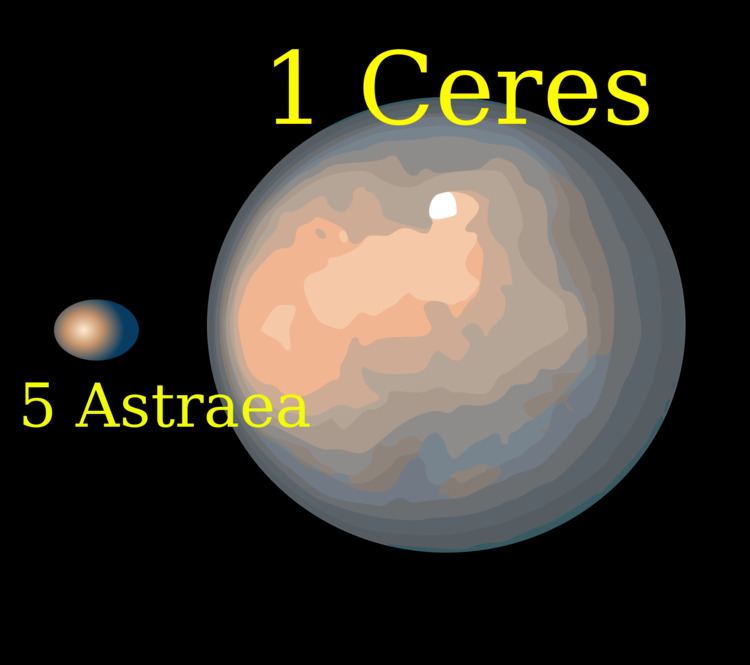Discovered by K. L. Hencke Pronunciation /æˈstriːə/ a-STREE-ə Minor planet category Main belt Orbital period 1,508 days Named after Astraea | Discovery date December 8, 1845 Alternative names 1969 SE Adjectives Astraean Discovered 8 December 1845 Orbits Sun | |
 | ||
Similar 6 Hebe, 9 Metis, 7 Iris, 11 Parthenope, 8 Flora | ||
5 Astraea is a large asteroid from the asteroid belt. Its surface is highly reflective (bright) and its composition is probably a mixture of nickel–iron with silicates of magnesium and iron. It is a S-type object in the Tholen classification system.
Astraea was the fifth asteroid discovered, on 8 December 1845, by Karl Ludwig Hencke and named for Astræa, a goddess of justice named after the stars. It was his first of two asteroid discoveries. The second was 6 Hebe. A German amateur astronomer and post office headmaster, Hencke was looking for 4 Vesta when he stumbled on Astraea. The King of Prussia awarded him an annual pension of 1,200 marks for the discovery.
Photometry indicates prograde rotation, that the north pole points in the direction of right ascension 9 h 52 min, declination 73° with a 5° uncertainty. This gives an axial tilt of about 33°.
Astraea is physically unremarkable but notable mainly because for 38 years (after the discovery of Vesta in 1807) it had been thought that there were only four asteroids. With an apparent magnitude of 8.7 (on a favorable opposition on 15 February 2016), it is indeed only the seventeenth-brightest main-belt asteroid, and fainter than, for example, 192 Nausikaa or even 324 Bamberga (at rare near-perihelion oppositions).
After the discovery of Astraea, thousands of other asteroids would follow. Indeed, the discovery of Astraea proved to be the starting point for the eventual demotion of the four original asteroids (which were regarded as planets at the time) to their current status, as it became apparent that these four were only the largest of a whole new type of celestial body.
An occultation on 6 June 2008 produced an effective diameter (silhouette) of 115 ± 6 km.
Astraea has been studied by radar. Arecibo observed Astraea in March 2012.
